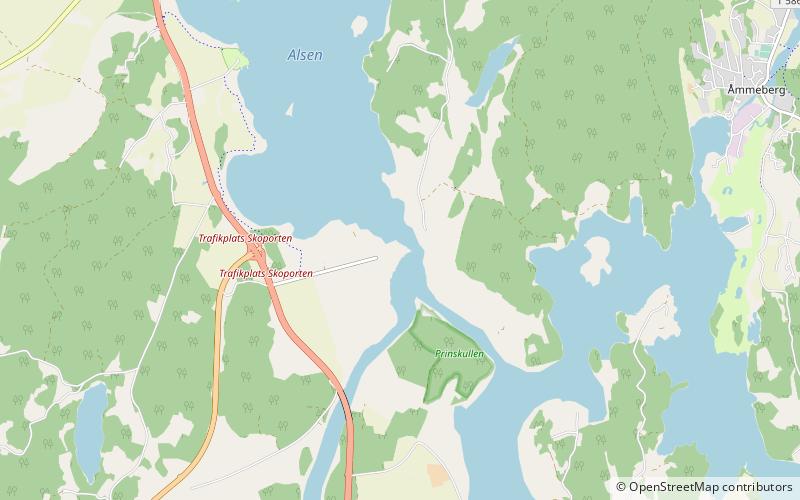Stjernsunds slott


Facts and practical information
Stjernsund Castle is a castle in the municipality of Askersund in Närke, and is also a museum open to the public.
The castle is located on a high headland between Stora Hammarsundet and Alsen, which forms the northern part of Vättern. It was built in 1798-1801 according to plans by Carl Fredrik Sundvall in the then modern neo-antique style. The main building has two storeys and an economy level with a projecting central section in the form of a heavy prostyle, supported by four rough columns, which rests on a high stone staircase. The old imperial castle complex, of which only the cellars remain, had at least one main stone building. As the sueciapicture of Askersund church shows, where Stjärnsund is visible in the distance, the building complex was built around a courtyard. Two of these had tall spires, the western one probably sitting over the entrance gate. A painting by Christina Soop from the 1660s, which is now on Tidö, shows in the background probably the northern part of the castle building, which had stone terraces down to the water and a towered building, the remains of which are preserved on the north side. However, the building ensemble in the painting is probably somewhat exaggerated for effect. Major works were carried out on the farm during this period, as evidenced by a preserved stone pedestal for a fritrappa or similar bearing the date 1664.
The manor was founded in 1637 by Johan Gabrielsson Oxenstierna by merging the manors Ölmesund, Åviken and Stockbråtet. It was expanded by purchase and exchange, so that the estate covered almost the entire Askersund parish and a large part of Hammar parish. It then came through marriage to the Soop family. With an interruption during the reduction, it remained in the possession of the Soop family until 1717, when it came by marriage to the Dohna family. In 1785 it was sold to the patron of the mill, Olof Burén, nobleman Burenstam, who had the present castle built. His son-in-law, Colonel Otto Julius Hagelstam, sold it to King Karl XIV Johan in 1823. The King's tenant let the property fall into disrepair. Oscar I sold Stjernsund to his son Prince Gustaf in 1851. The Prince of Song is said to have composed several of his songs at Prinskullen, such as Du undersköna dal and Glad wie fågeln. With the help of the intendant P. A. Nyström, he had the castle thoroughly repaired. After Prince Gustaf's death, Stjernsund was sold in 1856 to Prince August, who lived there for several summers. In 1860, he sold it to Knut Cassel, the patron of the mill.
After Knut Cassel's death, Stjernsund was taken over by his son Albert Cassel, married to Augusta Reuterswärd. After her husband's death, she managed the estate until 1948, when the forest was sold to Uppsala University. She kept the castle and park, but bequeathed it to the Royal Academy of Literature and Antiquities to be preserved as a cultural monument. Augusta Cassel died on 14 May 1951.
The property is the ancestral home of Swedish red cattle. The castle is open to the public in summer. The castle has a carriage museum, dairy and café.
Orebro
Stjernsunds slott – popular in the area (distance from the attraction)
Nearby attractions include: Askersund, Hammar.


